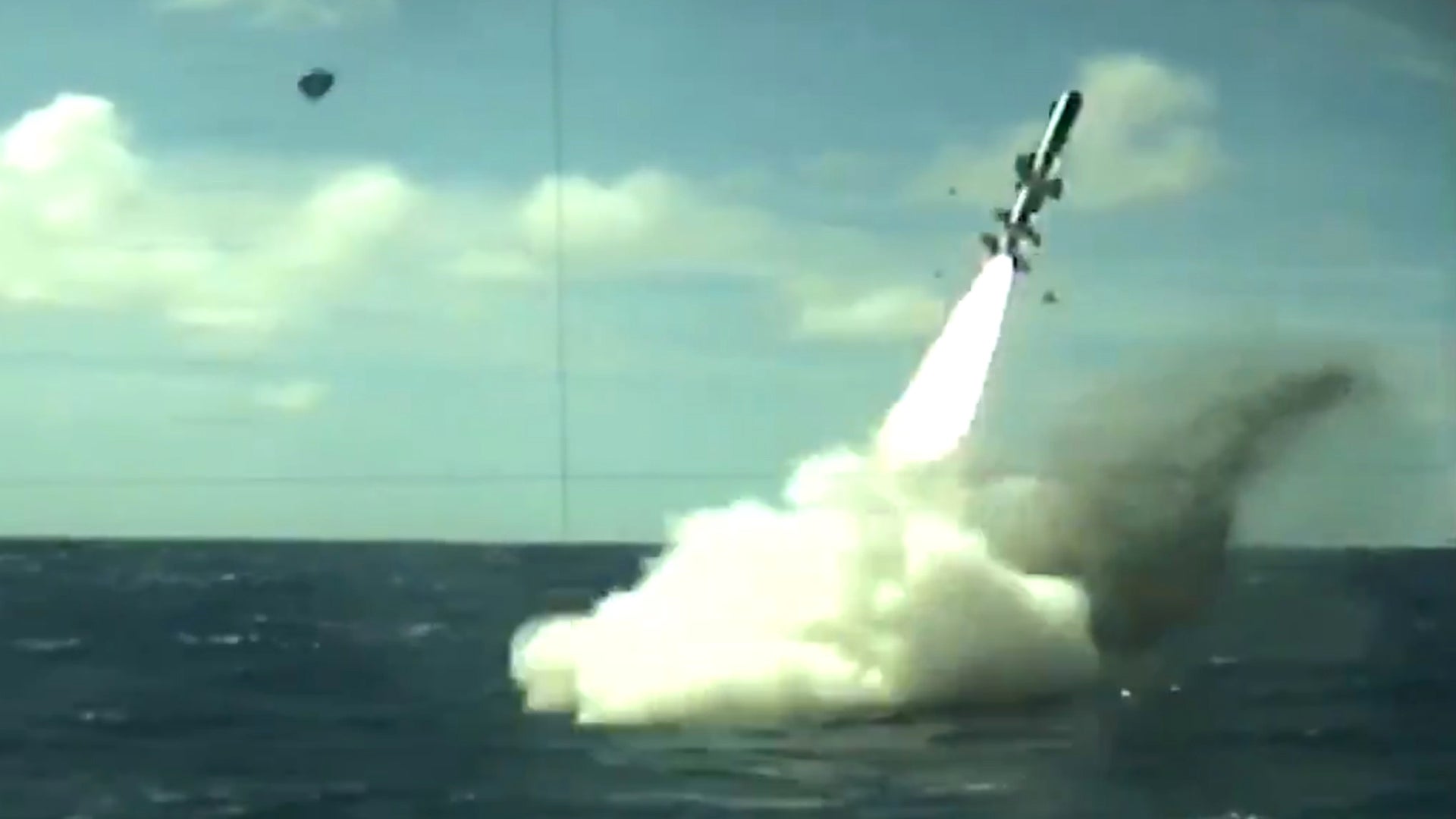It may be over four decades after it initially entered service, but the U/R/AGM-84 Harpoon anti-ship cruise missile still is no slouch and for what it may lack in cutting-edge features, it seems to make up for in raw reliability. Additionally, even after all this time and a number of increasingly capable variants being fielded, the Harpoon still has more capacity left for enhancements. In fact, Congress has just approved tens of millions of dollars in funds to upgrade a number of these weapons that are already in the U.S. Navy’s inventory.
During the U.S. Navy’s giant Rim of The Pacific (RIMPAC) international naval exercises, which occurs every other year off the coast of Hawaii, six Harpoons of various sub-types were fired off at targets, which include two decommissioned warships, the ex-USS Racine and the ex-USS McKlusky. These six missiles were fired from U.S. and Australian P-8 Poseidon maritime patrol aircraft in the air, from the Singaporean frigate RSS Tenacious on the ocean’s surface, and from an American Los Angeles class fast attack submarine from below the waves.
Out of the six missiles fired, every one of them worked just as advertised, resulting in an awesome showing for Boeing’s supposedly near-obsolete anti-ship missile.
The firing from USS Olympia was particularly interesting as it was the first time an American submarine had been equipped yet alone fired a Harpoon in over two decades. We talked all about this special and somewhat peculiar event in this past article.
Some 30 allies, along with the U.S. Navy continue to field Harpoon in various forms, so it’s not as if the missile is going anywhere anytime soon. But with the new upgrade package, dubbed the Block II+, it will feature at least some of the key capabilities of the latest anti-ship missiles that are now becoming the darlings of well-financed western navies, including the United State’s own seagoing force.
These upgrades include the internationally exported Block II’s GPS receiver and flight control system that will help the missile navigate its way to its target more precisely even in complex littoral environments and a two-way data-link (Strike Common Weapon Data-Link) to that allows the missile to be retargeted mid-flight.

Boeing also stresses that the Block II+ is ‘all weather’ and its performance is not degraded by rain. This is clearly in reference to other seeker arrangements that may have trouble prosecuting maritime targets when there is sizeable precipitation—which is very common in the maritime combat environment. They are probably referencing the imaging infrared seekers found on anti-ship capable missiles like the Tactical Tomahawk Block IV, Naval Strike Missile, LRASM, and many of the newest batch of high-end anti-ship missiles. The Harpoon uses an active radar seeker to detect its target once in the target area and to make its terminal attack run.

Although the Harpoon lacks high speed or low-observability like the most advanced anti-ship missiles that are on the market around the world today, the Block II+ offers a logical set of features balanced against cost and risk that still combine to form a formidable threat to potential maritime foes.
And above all else, when it comes to anti-ship missiles, quantity has a quality all its own. Firing multiple missiles at a single target can go a long way when it comes to overcoming a ship’s point defenses, especially in all but the highest-end combat situations. And for those situations, the Navy is developing other, longer-range and more survivable options to layer into its combat doctrine as well. Just the fact that the Harpoon uses active radar homing is reason enough for it to exist alongside its new, high-end, imaging-infrared guided anti-ship missile competitors.
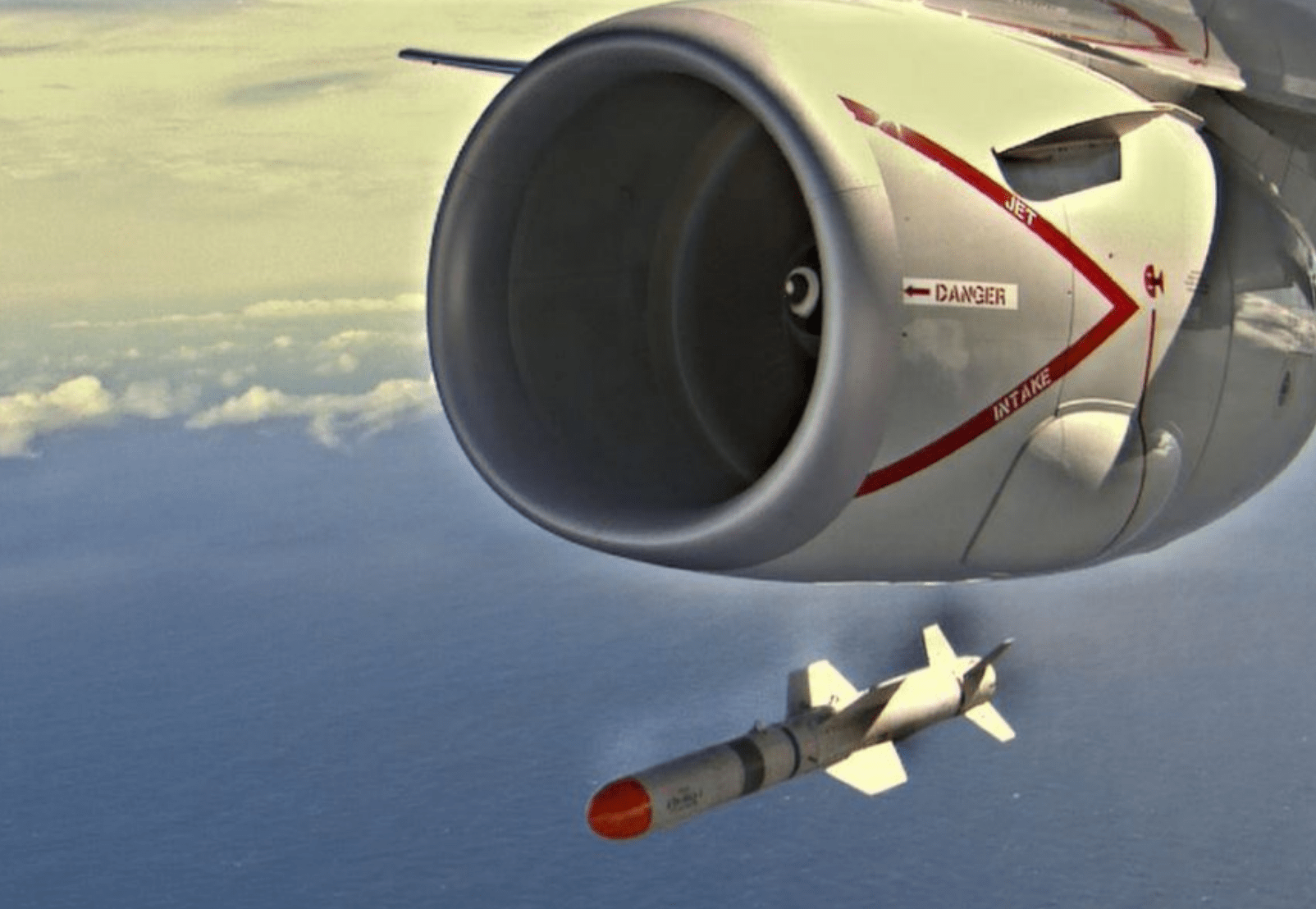
It’s also worth mentioning that when it comes to anti-surface warfare operations, presence is key above all else. Harpoon is out there in force already, and you can’t shoot at the bad guy with powerpoint presentation or a missile development program.
Considering the Harpoons to be upgraded are already bought and paid for—nearly 8,000 have been delivered in total over the life of the program—enhancing them seems logical. According to 2019 budget documents, each Harpoon Block II+ upgrade kit runs about $240,000. This is not big dollars when it comes to modern cruise missile prices. Under the latest budget just passed by the Senate, the Navy would seem to be set to receive roughly double the number of upgrade kits it had requested, or around 100 missiles and other associated items, worth roughly $26.5M in total. This seems quite reasonable considering the capability being gained.
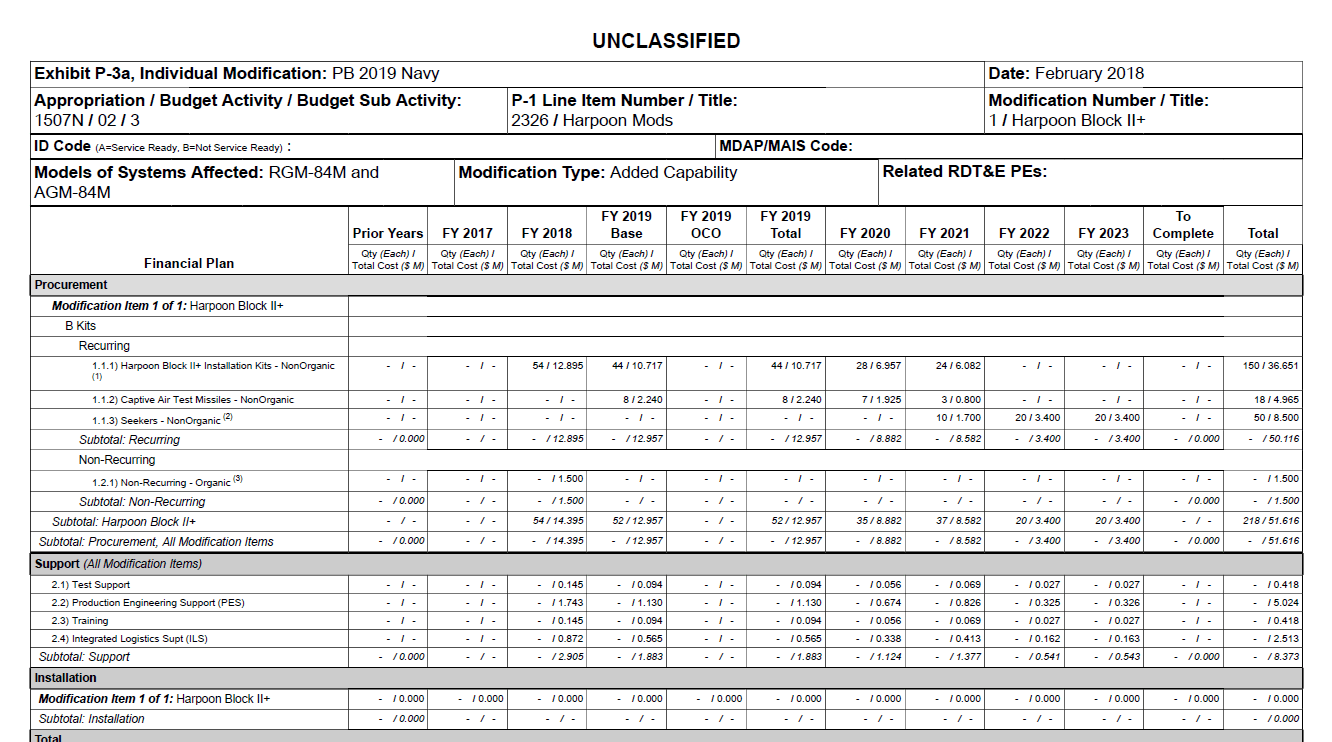
As for the possibility of returning the Harpoon to America’s fast attack submarine fleet, that is a very real possibility. USNI News’s Megan Eckstein did an awesome write-up on this possibility. In it she quoted Commander of U.S. Pacific Fleet’s Submarine Force Rear Admiral Daryl Caudle as stating the following:
“We thought we could get by with our heavyweight torpedo, our advanced capability (ADCAP) Mk 48 torpedo, because we thought the predominant threat at the time when that decision was made was submarines, instead of needing the standoff distance of an anti-ship cruise missile. We took those missiles and, like we do so well in our Navy, we shelved them and thought we may need to bring them back.
Today’s highly capable navies and adversary countries, the competitive countries we’re in great power competition with, have extremely good surface ships with very capable missile systems themselves. So to be able to actually improve our lethality at ranges much greater than the Mk 48 torpedo, we want to actually bring back an anti-ship cruise missile.
…
The way to bring back that in a phased way was to basically go to our Naval Undersea Warfare Center, NUWC, and have them reconstitute the capability, to build the software necessary to use our existing combat control system and talk to that Harpoon cruise missile. Olympia was chosen because we knew she was going to be part of RIMPAC.
…
We decided to shoot for the 2018 RIMPAC to test the Harpoon cruise missile system again. So this has been at least a year in the making. The folks doing the software coding were working hard up in Newport to get that system built, that coding built. The guys onboard the squadron here, Submarine Squadron 7 that owns the Oly (Olympia), working hard on that ship to practice the tactics, techniques and procedures to shoot the Harpoon; had to bring those back out of the mothballs as well to actually know the language that we speak to prepare for firing and actually shooting the weapon. So had to dust those procedures off.”

The admiral continued, describing just how well the shoot went for Olympia, which had two Harpoons loaded, one being a backup:
“Got in position on the range at PMRF (Pacific Missile Range Facility), which is over off of Kauai. We thought we were going to have to shoot second, and as luck turned out and I was very thrilled, the Air Force mission which was to shoot a LRASM, a long-range anti-ship missile, they got delayed, so we got to shoot first. We shot the Harpoon perfectly, went into cruise and hit the ex-Racine, which is an LST, dead center.
…
The beautiful part of this is, the Oly was not expected to shoot the torpedo too. They had been scheduled for the next hulk (decommissioned ship) to shoot the Mk 48, but the way that things unfold in the real world, the shooters changed that day, so Oly got tasked about mid-day to go and actually shoot an ADCAP also.
…
So we got to move into position and actually then shoot the heavyweight torpedo. That torpedo, again, a warshot, worked perfectly, went out there and did its job and honed in on the Racine, broke its keel, and a couple hours later it was on the bottom. Our torpedo is an extraordinary weapon, it really is.
So the interesting part is, you can see kind of almost a tactic there that I think is important that we got to practice just by happenstance: shooting a long-range shot and then move in for the close-range shot.
…
No question… From my perspective, it worked flawlessly.”
There’s a lot of interesting information in here, but one tangental fact worth mentioning is apparently Lockheed’s stealthy and very smart LRASM, was also fired, or was supposed to be fired during, during the first SINKEX drill. This hadn’t been disclosed prior to this interview, at least to our knowledge.
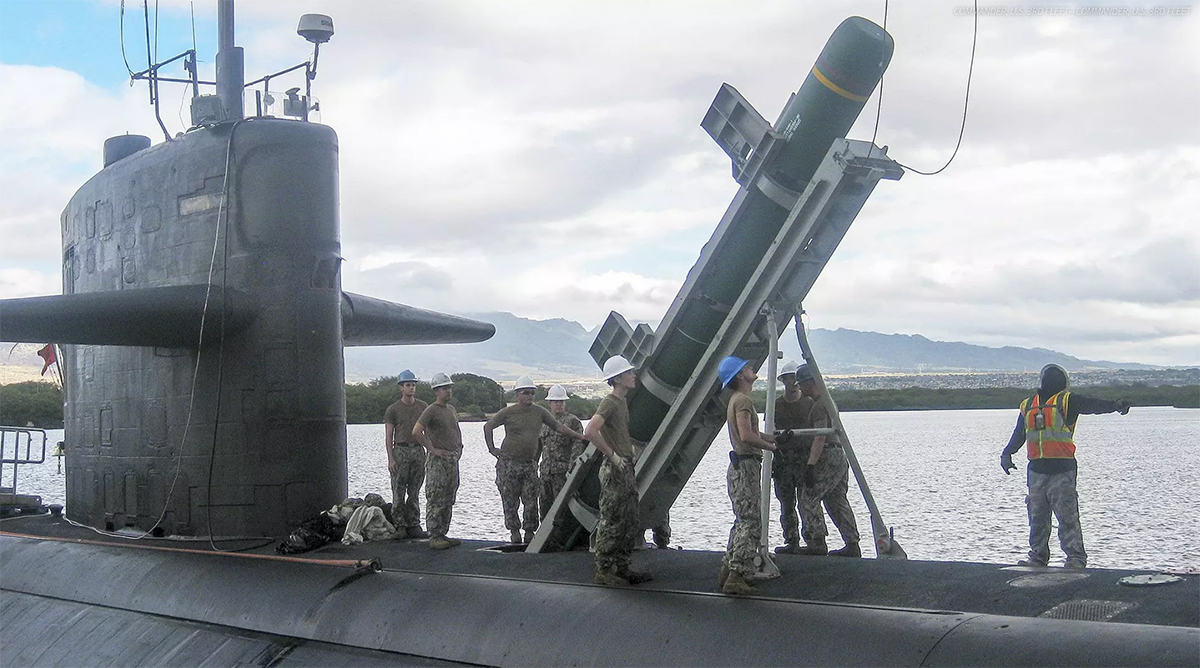
After the Harpoon’s great success at RIMPAC, and Olympia’s live-fire in particular, the Navy brass in Washington, D.C. will have to decide if they want to place Harpoon back aboard its fast attack submarines. But considering the fact that the Navy wants its submarine force to get back into the anti-ship missile firing game, and in a very high-end and exotic fashion via its secretive Sea Dragon program, the Harpoon could be the perfect lower-end capability in a flexible high-low capability mix of submarine-launched anti-ship missile capabilities. And seeing as it is an off-the-shelf and proven solution, it almost seems too glaringly logical for the Navy brass shoot-down.
Boeing has also developed a new extended-range variant of the Harpoon, the Harpoon Block II+ ER, which features the same Block II+ capabilities but with double the weapon’s current range of around 80 miles. This missile features a lighter warhead—300lbs instead of 500lbs—and other alternations to provide far greater reach.
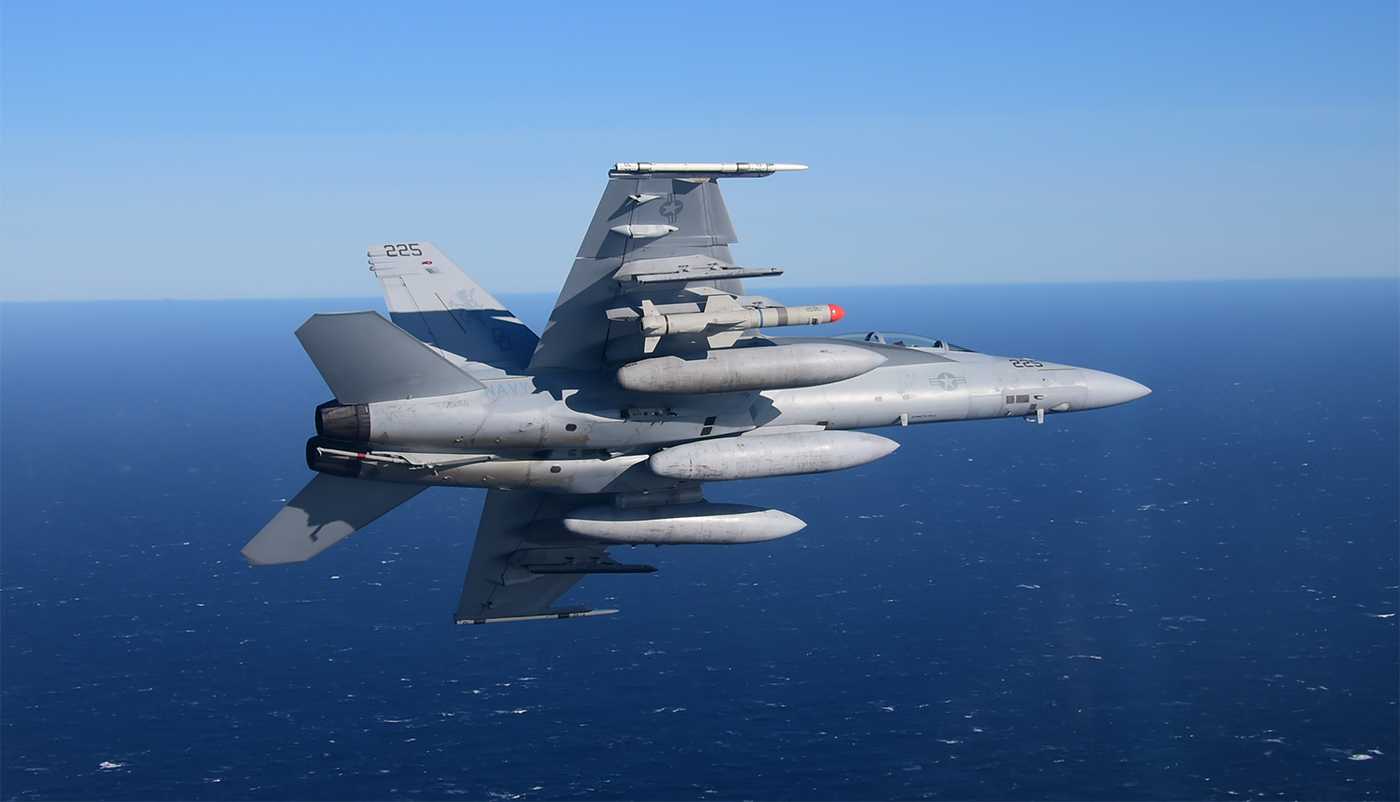
The Navy passed over the Harpoon Block II+ ER for the Naval Strike Missile recently as part of an initiative to outfit its Littoral Combat Ships and future frigate, the FFG(X), with an over-the-horizon anti-ship cruise missile, but Boeing is continuing with the type’s development and is marketing it abroad. Also, the Army still hasn’t decided what anti-ship missile it will buy, and this latest Harpoon variant could be a contender.
So there you have it, the Harpoon anti-ship cruise missile, still going strong as it enters its fifth decade of front-line service.
Contact the author: Tyler@thedrive.com
